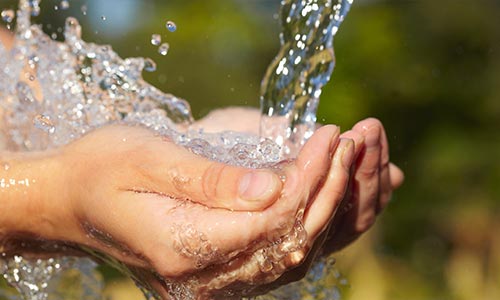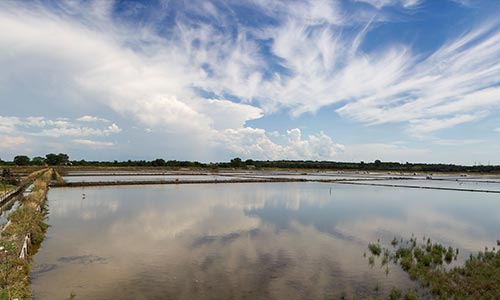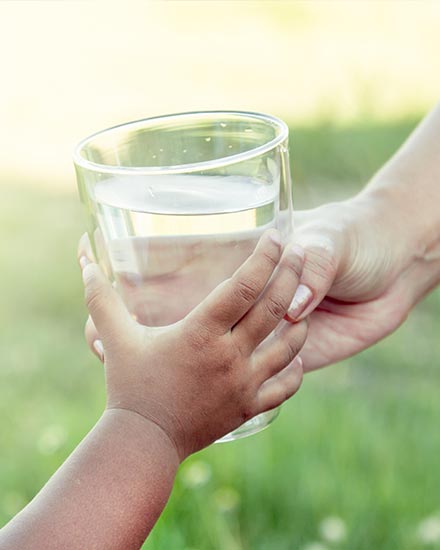Desalination is often the only way to provide potable water to a hotel, municipality, or industrial plant. However, desalination shouldn’t be looked at as a last-resort. Instead, it should be viewed as a great, viable, and cost-effective solution to your water scarcity needs.
With an unprecedented world population, combined with generally high standards of living, people are running up against the limits of available fresh water. With 96 percent of the world’s water being salt water, reverse osmosis filtration is an effective means to get around the natural limits of freshwater availability.
You may have concerns about the viability, cost, and effectiveness of this technology. We’re here to answer your questions about this water treatment method to shine light on some common misconceptions.
You might be thinking…
I don’t live next to the coast, so desalination can’t be of use to me.

The term “desalination” is a bit misleading because the process can remove more than just salt from the water source. In fact, the process can remove harmful chemicals, metals, or bacteria that may have been contaminated by a variety industrial processes or natural occurrences. Therefore, you do not need to live near the ocean for desalination to be extremely useful.
Many desert areas and low flat lands have brackish water due to the fact that they used to be sea bed millions of years ago and thus the soils contain a high level of dissolvable minerals and salts. No matter your location, desalination is a useful technology that can fit the needs of many.
But I can’t afford a water plant for my remote site. Wouldn’t some other solution make more sense?
Thin membrane reverse osmosis is more affordable than many people think and costs are continuing to drop. If you have a resort or industrial site in a relatively isolated area, this can be the most cost effective means of providing adequately clean water for your guests, customers, and residents. In contrast to running pipes and other infrastructure from an established water plant, installing your own water filtration system is much more logical and affordable.
But won’t it harm the environment?
There is so much pressure on existing fresh water sources that desalination is increasingly seen as an environmentally sound alternative to further stripping fresh water sources. Many rivers cannot be drawn down any further without doing irreparable harm to their ecosystems. Turning to salt water as a usable water source by removing the salt allows communities to protect their remaining fresh water sources as important parts of the larger ecosystem.

But I don’t want to drink salt water or contaminated water that has had stuff removed from it. That sounds gross.
The reality is that all freshwater has had elements removed from it. Fresh water only becomes “fresh” because of various natural processes that remove salt and other contaminants. The water cycle includes oceans and groundwater, not just rivers, streams, and lakes, making it a natural part of our ecosystem. Once treated, salt or contaminated water is no more different or “gross” than bottled water you buy at the store.
Water circulates, evaporating from large bodies of water, such oceans and lakes, and becomes clouds in the sky. Then precipitation — rain or snow — brings it back down where it then re-enters the groundwater, rivers, lakes, and the sea.
All clean water has, in some manner, had other elements removed from it at some point. This is true whether we get it from a freshwater source, saltwater source, or a brackish water source. This means you can drink up worry-free.
It just seems unhealthy. I prefer my water from freshwater sources.
 Desalination not only removes salt, it also removes harmful metals, chemicals, and bacteria that could be in your water source. It removes bacteria by physically excluding them through the use of chemical processes. Membranes today have openings large enough for water to pass through, but small enough for many other molecules to get caught–such as single cell organisms like paramecium and bacteria.
Desalination not only removes salt, it also removes harmful metals, chemicals, and bacteria that could be in your water source. It removes bacteria by physically excluding them through the use of chemical processes. Membranes today have openings large enough for water to pass through, but small enough for many other molecules to get caught–such as single cell organisms like paramecium and bacteria.
This means that treated water can be healthier than fresh water. In fact, some families with chronic, incurable health problems, such as certain genetic disorders, rely upon this type of filtration as a means to reduce the incidence of infection in family members who get sick too easily and are vulnerable to germ exposure. Not only is desalination a great means for developing potable water, it is also a way to ensure the health and longevity of those who consume it.
It just seems unreliable. What if the water plant breaks down? Fresh water sources can be used without this much filtration.
When designed and maintained properly, water treatment systems are highly reliable. If your equipment is kept clean and dry, experiences regular maintenance, and was properly designed, it can last for years to come. (Take a look at our 10 Ways to Keep Your Water Plant in Peak Condition for more information.)
Reverse osmosis systems can run continuously without interruption, and actually prefer to if possible. Theoretically, if your source water was perfectly clean (just salty), containing no suspended solids, organics, or other foulants, an RO plant would only need to shut down for routine mechanical maintenance like motor bearings, seals, or similar issues. Membranes don’t need a break to cool down, or regenerate, and in fact, should not be left in standing water for too long. So go ahead and run them flat out as long as you want!
Keep in mind: Fresh water usually still needs treatment. All water gets treated to some degree or another before it is fit for human use. It is not a case of if, it is a case of when, where, how and how much.
Using untreated fresh water is a potential health crisis. When systems break down, people are generally instructed to boil their water, among other things, to help make up for the lack of treatment. Untreated water is always a problem, regardless of the source.
But shouldn’t the world just use less water rather than start using salt water?
We are already beyond the limits of freshwater availability. In fact, there are efforts going on to reverse historical abuses, such as the restoration of water flow to the mouth of the Colorado River.
 Even if we make a concerted effort to use water more efficiently, it is not possible to supply the world with enough clean water for human use and also restore damaged ecosystems stressed by decades of the overuse of existing water sources.
Even if we make a concerted effort to use water more efficiently, it is not possible to supply the world with enough clean water for human use and also restore damaged ecosystems stressed by decades of the overuse of existing water sources.
With ongoing drought, global warming, and a rapidly increasing world population, it is just not realistic to think we can simply use less water and somehow make that work. Salt water represents an enormous untapped source that has the ability to save us from the dangers that water scarcity presents.
But what about the fish? Won’t they get sucked up and killed in the reverse osmosis membrane systems?
Excluding wildlife — including, but not limited to fish and fish eggs — from the intake systems are not unique to salt water processing. This must also be taken into consideration when designing fresh water treatment plants.
The best method of addressing this issue is to draw the feed water from wells. Often a seawater or brackish water RO plant can be fed from drilled boreholes with submersible well pumps. This not only avoids sucking in marine life, but the ground acts as an effective pretreatment system to clean the water before entering the membrane system. In many cases, only a cartridge filter is needed when drawing from wells.
With the demand for water increasing, desalination serves a vital need across the world. This type of treatment helps make people healthier and wealthier while improving the environment by freeing up stressed fresh water sources. It makes people wealthier in part because water plays such a critical role in commerce and industry. Water is not only vital to life, it is vital to business. Freshwater resources not only are already stretched thin, they are, in fact, overused and have been for a long time.
Municipalities, industry, mines, hotels, resorts and other entities are beginning to utilize this great technology. It has improved by leaps and bounds in recent decades and continues to grow as a cost-effective, safe, and reliable means for bringing freshwater to those in need.
If your organization or municipality is ready for a desalination system, contact ISI Water today.
